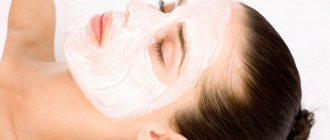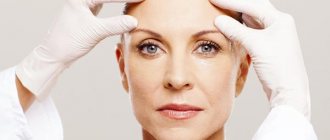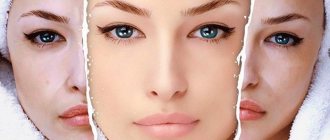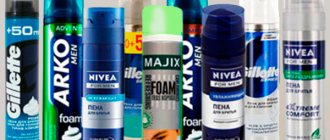High-quality peeling will help speed up the exfoliation of the stratum corneum and make the face fresh and smooth. Peeling products contain various substances: acids, herbal extracts, seaweed extracts. In professional cosmetology, preference is increasingly being given to pyruvic peeling - this is an exfoliation preparation containing a mixture of lactic and pyruvic acid.
What kind of facial skin treatment is this?
Pyruvic peeling is a special cleansing procedure in which the base of the exfoliating mixture is pyruvic acid. This component does not cause allergic reactions, since it is synthesized in the cells of the human body.
Features and Properties
This procedure has the following effects on the skin:
- gently removes the upper cellular layer, due to the predominance of an acidic environment on the surface of the skin itself;
- starts the process of skin restoration with the help of building material for new cells;
- under the influence of chemical reactions, pyruvic acid is converted into lactic acid, which significantly improves complexion and removes many aesthetic imperfections.
This procedure is a superficial cosmetic procedure, since it does not affect the deeper layers of the skin. Due to its effects, this substance is considered a gentle remedy for working with aging, sensitive and dry skin.
The particularly beneficial properties of pyruvic acid include the restoration of bonds between hyaluronic acid and water molecules at the cellular level.
Efficiency
To achieve a lasting result, you need from 6 to 10 peeling sessions in a professional salon. In this case, you will see a lasting result that will last for more than one month. It is optimal to repeat this procedure at least once a year. As a result, it is possible to achieve the following indicators:
- reduce the level of pigmentation or completely whiten it;
- stabilize the functioning of the sebaceous glands;
- tighten pores;
- fight acne;
- reduce the number and depth of age and facial wrinkles;
- has a positive effect on skin tone, making it even;
- restore skin hydrobalance.
We recommend: How to make facial peeling at home? The best recipes, precautions
After the procedure, the oval of the face looks tightened, the skin becomes fresh and healthy.
How often this procedure is needed will be decided by a specialist after studying the structure and problems of the facial skin.
- If there is increased pigmentation, cleansing should be done once every 2 weeks.
- To combat age-related skin changes, as well as teenage acne, the procedure is used once a week.
- To maintain the result after the course of treatment, it is necessary to peel once a month.
What results can you expect?
Pyruvic acid peeling of the face is essentially a controlled chemical burn, the depth of which is determined by a cosmetologist depending on the existing problems and defects. The degree of penetration of the active substance into the dermal tissue is determined by the time of the procedure, the concentration of pyruvic acid in the composition and the pH level.
Mechanism of action of pyruvate peeling
The therapeutic and cosmetic effect of pyruvate exfoliation is ensured by the stimulating effect of pyruvic acid, which increases the activity of fibroblasts. Fibroblasts are the cells that make up connective tissue. They produce extracellular matrix, mucopolysaccharides, and fibrillar proteins responsible for maintaining skin elasticity and firmness. Pyruvate peeling also removes excess sebum, cleanses pores and normalizes the secretory activity of the sebaceous glands, preventing the re-formation of sebaceous-horn plugs on the face (comedones).
Patients who have completed a full course of recovery with pyruvic acid preparations usually describe the following results from the procedure:
- the skin becomes healthier and smoother, its color and texture are evened out;
- manifestations of acne and post-acne are reduced;
- the skin is cleansed of sebaceous plugs, sebum secretion is normalized;
- fine wrinkles are smoothed out, skin turgor increases;
- signs of increased pigmentation disappear;
- dark circles under the eyes are lightened;
- The normal level of skin moisture is restored, increased dryness, flaking and a feeling of tightness disappear.
After peeling, the skin brightens and smoothes, becomes more elastic
An important effect of pyruvate peeling is increased hemodynamics (blood movement through the vessels). This helps not only to improve the appearance of the skin, but also to normalize cellular nutrition, since it is with blood that epidermal cells receive the necessary vitamins, macro- and microelements, as well as oxygen molecules.
Indications and contraindications
Pyruvic acid peeling has an expanded list of indications for use. He is appointed:
- with seborrheic dermatitis;
- to combat acne and acne;
- when combating enlarged pores;
- for tightening the oval of the face;
- when stagnant spots form;
- for facial wrinkles of varying depths.
In rare cases, pyruvic acid can still cause an allergic rash, so it is better to undergo a preliminary allergy test to be sure.
The dry cleaning procedure also has a number of contraindications. These include:
- period of pregnancy and breastfeeding;
- presence of cuts and injuries in the treated area;
- oncological diseases;
- diabetes;
- presence of infectious diseases;
- periods of exacerbation of any chronic diseases;
- any serious respiratory diseases, including asthma;
- individual intolerance to the components of pyruvic peeling.
If there are contraindications, the procedure should be abandoned to avoid health problems.
Types of grape peeling
Types of pyruvic peeling depend on the depth of penetration into the layers of the dermis.
- Superficial peeling does not penetrate deep into the dermis and cleanses exclusively the upper layers of the skin.
- Medium peeling is a deeper type of procedure.
Pyruvic peeling (its features)
One of the most popular pyruvic peels is “Cosmoteros”. Other well-known brands that produce similar products are:
- Italian "Enerpeel";
- domestic "Mediccontrolpeel" and "Martinex";
- Spanish "Mediderma" and "Toskani cosmetics".
Peeling using pyruvic acid is significantly more effective than a similar procedure using glycolic acid.
A similar session of chemical exfoliation of the epidermis can be compared to peeling with trichloroacetic acid.
The peculiarities of this manipulation are that it is usually well tolerated by the patient’s body, and the chemical properties of the solution eliminate the occurrence of allergic reactions.
This is due to the fact that lactic acid is contained in the soft tissues of the human body and is not perceived by it as a foreign substance. Reviews from cosmetologists about pyruvic peeling confirm this fact.
The reason for the popularity of pyruvine peeling is its effectiveness, relative ease of implementation, the absence of a long rehabilitation time, as well as minimal contraindications to its implementation.
Stages of carrying out in the salon
The professional procedure in the salon itself consists of several stages. They are all interconnected, and if the sequence is violated, the effectiveness of the procedure as a whole decreases. This is why pyruvic peeling is best done in a salon by experienced cosmetologists.
We recommend: The benefits and effectiveness of peeling with lemon. How to cleanse your facial skin at home using this method?
Preparation
Preparatory procedures include cleansing the skin of cosmetics, dirt, and dust. For this purpose, professional salons use special mousses - antimicrobial and keratolytic.
Such products contain plant extracts and extracts that soothe the skin and prepare it for the effects of acid peeling.
In addition to dirt, sebum is removed from the skin during the preparatory stage. The mousse is applied to the skin with massage movements and washed off after a couple of minutes.
Applying an exfoliant
The peeling composition has a liquid structure and is applied using discs or tampons to the following areas:
- forehead;
- area under the lower cheekbone and chin;
- cheeks, cheekbones;
- area around the mouth;
- wings of the nose;
- eyelids.
When applying, the cosmetologist is obliged to monitor the skin reaction. If irritation, burning, or redness occurs, the amount of peeling agent or the time of its exposure to the facial skin should be reduced.
Patients do not experience pain during peeling, although they may feel some tingling and tingling. This discomfort goes away after removing pyruvic acid from the treated area.
Neutralization
A special neutralizer is used to remove the peeling agent. The cosmetologist applies it to a sterile cotton swab and wipes the skin with gentle movements. The sequence is usually from more sensitive areas to less sensitive ones. Then the face should be treated with cool water. The treated surface should be wiped with blotting movements using a cotton towel or a special napkin.
Skin care
For recovery, you need to apply a special cream after the procedure. It should be a soothing or restorative composition with properly selected plant extracts or components.
The main purpose of such compositions is to heal and soothe damaged skin structure. Also, soothing care creams help protect skin damaged by peeling from the effects of adverse environmental factors. The rehabilitation period lasts from 10 days to two weeks.
We recommend: Why do you need lip peeling? How is the procedure carried out at home and in the salon?
We invite you to watch a video about the pyruvic peeling procedure:
Healing period
The skin regeneration period lasts approximately 7–10 days. During this time, follow these recommendations:
- on the first day, touching the skin is limited;
- to speed up the healing process, it is recommended to use professional post-peeling cosmetics;
- It is forbidden to use scrubs - the recovery process must take place naturally;
- during the entire rehabilitation period, refrain from drinking alcohol, visiting the pool or sauna;
- It is recommended to use sunscreen before going outside.
Can it be done at home?
To do pyruvic peeling at home, you must take increased precautions. Otherwise, there is a high probability of getting a chemical burn to your facial skin.
- First of all, when carrying out the procedure at home, it is important to follow the instructions for the home kit for pyruvic peeling.
- It is also necessary to follow the sequence of stages, not skipping preparation and rehabilitation after the procedure.
- The most important thing when carrying out the procedure at home is not to increase the exposure time of the peeling product to the facial skin.
Some cosmetologists are strict about this procedure and are categorically against performing chemical peeling at home without experience.
Expert opinion
- Cosmetologist
- Surgeon
Michelle Ellern
practicing cosmetologist-dermatologist
During the rehabilitation period (1 week), the patient needs to minimize all physical contact with his face, otherwise there is a risk of infection of the damaged tissues. Washing should be done with special soft products recommended by the attending physician.
Theda Contis
plastic surgeon
In order to prevent infection of injured skin, it is necessary to treat the face with Miramistin solution, and then use a healing cream. In addition, the patient should avoid exposure of the skin to strong winds, frost or heat.
The peculiarity of the procedure is that due to the effect of lactic acid, the patient’s skin is protected from drying out during the rehabilitation period.
Before using pyruvic peeling, it is recommended to look at photographs and read “before” and “after” reviews on the Internet.
Possible side effects
Pyruvic acid peeling has several side effects that are not dangerous, but it is better if you prepare for such results in advance:
- peeling, feeling of tightness, dry skin and redness;
- tingling and burning after the procedure for 2–3 days;
- increased sensitivity to sunlight and many other environmental influences.
The most dangerous side effects include spasms of the respiratory tract in people suffering from diseases of the respiratory system. This is primarily due to the pungent odor of pyruvic acid. Therefore, be sure to ventilate the room during the procedure.
At the moment, pyruvic peeling is the most popular procedure in cosmetology. This effective and versatile product helps renew the surface and middle layers of the skin.
A whole range of problems, from expression lines to pigmentation and acne, can be solved using pyruvic acid. But it is better to do this in salons with specialists who can fully carry out all stages of the procedure, including rehabilitation.
Patient reviews
- Anna, 30 years old: “The cosmetic procedure, of course, is quite expensive. But the achieved effect is worth it. And the pleasant grape aroma of the drug is a bonus!”
- Alina, 35 years old: “I have fairly thick skin, so I can tolerate various types of cleansing well. After pyruvic peeling, the feeling of peeling is quite weak, but the rejuvenating effect, on the contrary, is quite noticeable.”
Pyruvic acid peeling is an effective procedure for preventing the occurrence of ptosis. It helps eliminate comedones and acne, reduces the depth of wrinkles and tightens the oval of the face, and evens out color.
Rating
Preparation
Pyruvate peeling refers to procedures that require mandatory preliminary preparation, which is necessary to remove excess sebum, hyperkeratosis (thickening of the stratum corneum of the epidermis) and inflammatory processes. Such manipulations will reduce the risk of irritation and side effects after the procedure, and will also increase its effectiveness, since excess sebum or dead skin cells can significantly impede the penetration of active substances to the required depth.
The skin must be properly prepared for the procedure
In addition to procedural preparation, the patient must also undergo a comprehensive examination (including examination and consultation with a dermatologist) and medication preparation, which includes daily use of products containing glycolic acid. These can be tonics, serums, emulsions or facial gels, which must be selected together with a specialist. Consultation with a doctor is necessary to correctly select the required concentration of acids and prevent chemical damage to the skin that can be caused by products with a high content of glycolic acid.
Depending on the existing problems, preparation for pyruvate peeling also includes cleansers, anti-inflammatory agents and retinoids necessary to regulate keratinization (keratinization) of the skin.
It all starts with a consultation with a dermatologist
Important! Preparation for pyruvic peeling should last at least 2-3 weeks.











